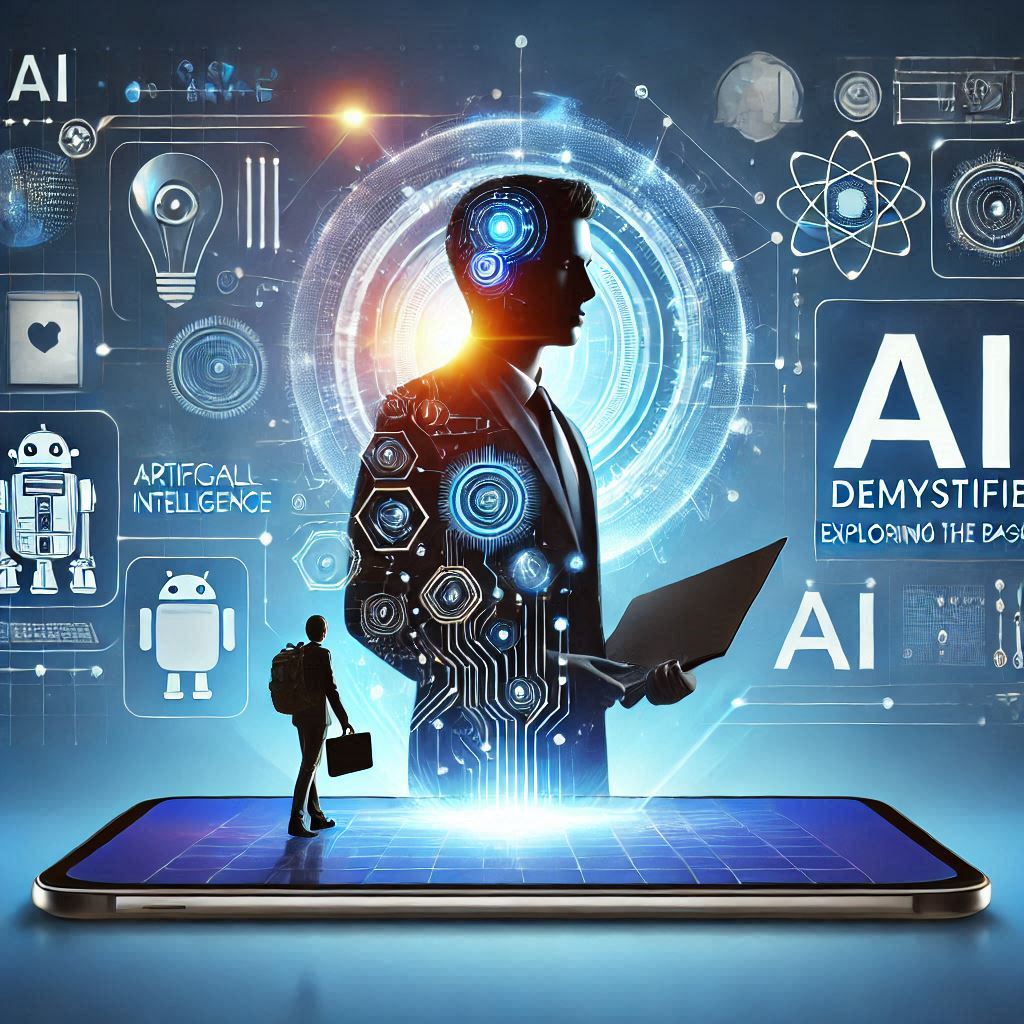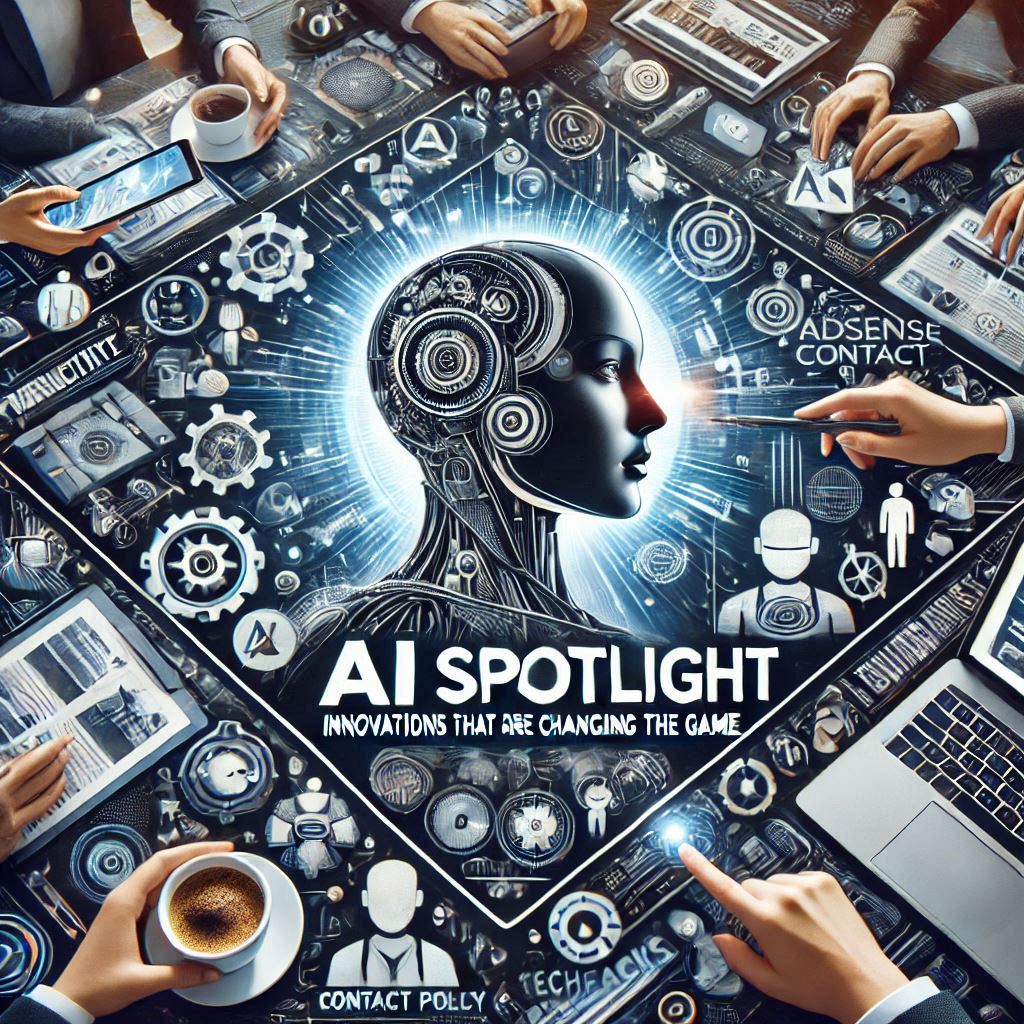Artificial Intelligence (AI) is no longer a concept confined to science fiction. It has become an integral part of our daily lives, from smart assistants like Siri and Alexa to more sophisticated applications like self-driving cars and predictive analytics. Despite its widespread use, AI remains a mystery to many, often evoking images of robots and futuristic technology. This article aims to demystify AI by explaining its basics, key types, and how it is reshaping industries. We will also discuss its challenges, ethical concerns, and the future of AI.
1. What is Artificial Intelligence?
At its core, Artificial Intelligence refers to the simulation of human intelligence in machines that are programmed to think and learn like humans. AI systems are designed to analyze data, recognize patterns, and make decisions based on the information they process. Rather than being explicitly programmed for every task, AI systems learn from experience, adapt to new inputs, and improve over time.
Why it matters: AI has the potential to revolutionize industries by automating complex tasks, enhancing decision-making, and unlocking new levels of efficiency. It holds the promise of improving everything from healthcare and transportation to marketing and customer service.
2. The Different Types of AI
AI can be broadly classified into three categories based on its capabilities: Artificial Narrow Intelligence (ANI), Artificial General Intelligence (AGI), and Artificial Superintelligence (ASI).
- Artificial Narrow Intelligence (ANI): Also known as Weak AI, ANI is designed to perform a specific task or set of tasks. Examples include AI systems used in voice recognition, recommendation engines, or image recognition software. These systems are highly specialized but lack the ability to perform tasks outside their pre-defined scope.
- Artificial General Intelligence (AGI): AGI, or Strong AI, refers to machines that possess the ability to perform any intellectual task that a human can do. AGI is still in the realm of research and has not yet been achieved. It would involve machines that can think, reason, and solve problems across a wide range of activities, much like a human brain.
- Artificial Superintelligence (ASI): ASI represents a level of intelligence far surpassing human capabilities. This form of AI would be able to outperform humans in every field, from scientific research to creativity. While ASI is a topic of much debate and speculation, it remains a theoretical concept at this point.
3. How Does AI Work?
AI systems work by processing large amounts of data and using algorithms to identify patterns and make predictions or decisions. The key technologies that enable AI to function include:
- Machine Learning (ML): Machine learning is a subset of AI that allows systems to learn from data and improve over time without being explicitly programmed. ML algorithms analyze data, identify patterns, and make predictions based on that information. This is used in applications like fraud detection, email filtering, and recommendation systems.
- Deep Learning (DL): Deep learning is a subset of machine learning that uses neural networks with many layers to process data. It is particularly powerful for tasks like image and speech recognition, where vast amounts of data are involved. Deep learning models have achieved breakthroughs in areas like autonomous driving and natural language processing.
- Natural Language Processing (NLP): NLP enables machines to understand, interpret, and respond to human language. This technology powers applications like chatbots, language translation, and virtual assistants. NLP helps machines understand context, sentiment, and intent, allowing for more sophisticated interactions with users.
- Computer Vision: Computer vision enables machines to interpret and make decisions based on visual data, such as images and videos. This technology is used in facial recognition, object detection, and autonomous vehicles.
Why it matters: The combination of machine learning, deep learning, NLP, and computer vision enables AI to perform tasks that were once thought to be exclusive to humans, such as understanding language, recognizing faces, or diagnosing diseases from medical images.
4. AI in Action: Real-World Applications
AI is making a significant impact across various industries, driving innovation and efficiency. Here are some examples of how AI is being used today:
- Healthcare: AI is transforming healthcare by improving diagnosis accuracy, personalizing treatment plans, and speeding up drug discovery. Machine learning algorithms can analyze medical images to detect early signs of diseases like cancer, while NLP is being used to process and interpret patient records more efficiently.
- Transportation: Self-driving cars are one of the most talked-about AI applications. These vehicles use AI algorithms to analyze data from sensors and cameras to navigate the roads safely. AI is also used in logistics and route optimization, helping companies deliver goods more efficiently.
- Finance: AI is widely used in the financial sector for fraud detection, risk management, and algorithmic trading. Machine learning models analyze transaction data to identify unusual patterns and predict potential risks. AI is also helping with personalized financial advice through robo-advisors.
- Retail: Retailers are using AI to personalize shopping experiences for customers, predict trends, and optimize inventory management. Recommendation engines, which suggest products based on previous purchases or browsing history, are powered by AI.
- Customer Service: AI-powered chatbots and virtual assistants are revolutionizing customer service by providing instant, 24/7 support. These systems can handle common customer inquiries, route more complex requests to human agents, and improve overall customer satisfaction.
5. Ethical Considerations and Challenges
As AI becomes more integrated into our daily lives, several ethical concerns and challenges need to be addressed:
- Bias and Fairness: AI systems are only as good as the data they are trained on. If the data is biased, the AI system may also produce biased results, leading to unfair outcomes. Ensuring fairness in AI decision-making is a critical issue, particularly in areas like hiring, law enforcement, and healthcare.
- Privacy: AI systems often rely on large amounts of personal data to function effectively. This raises concerns about privacy and how data is collected, stored, and used. It is crucial for organizations to implement robust data privacy measures and comply with regulations like GDPR.
- Job Displacement: As AI systems automate more tasks, there is concern about job displacement. While AI can enhance productivity, it may also replace jobs that were once performed by humans. It’s important to balance the benefits of automation with the need for job creation and reskilling.
- Accountability: As AI systems make more decisions on behalf of humans, questions of accountability arise. Who is responsible when an AI system makes a mistake? Developing clear regulations and accountability frameworks is essential to ensure that AI systems are used responsibly.
6. The Future of AI
The future of AI holds immense promise. As AI technology continues to evolve, we can expect even more profound changes across industries. Some potential developments include:
- General AI: While we currently have narrow AI, researchers are working towards achieving Artificial General Intelligence (AGI). This would lead to machines capable of performing a wider range of tasks with human-like reasoning and decision-making abilities.
- AI in Creativity: AI is already making strides in creative fields, such as art, music, and writing. Future advancements in AI could lead to machines that can create original works of art, compose music, or generate innovative solutions to complex problems.
- Human-AI Collaboration: Instead of replacing humans, AI could augment human capabilities, leading to more collaborative work environments. AI could assist in decision-making, enhance creativity, and provide insights that humans might miss.
Why it matters: The future of AI will reshape how we work, live, and interact with technology. As AI continues to evolve, it offers the potential for breakthroughs that could address some of humanity’s biggest challenges, such as climate change, healthcare, and poverty.
7. AdSense Compliance: Monetizing AI-Related Content
When creating content about AI for your website, it’s important to adhere to Google AdSense’s policies to ensure successful monetization. Here are some tips:
- Create High-Quality, Original Content: Focus on providing valuable and informative content that educates your audience about AI. Avoid duplicating content from other sources and ensure your articles are well-researched and engaging.
- Follow AdSense’s Content Guidelines: Make sure your website complies with AdSense’s content policies, including avoiding prohibited content such as adult material, hate speech, or misleading claims.
- Provide Clear and Transparent Information: If your site collects user data or uses cookies, be transparent about your practices. Ensure that your website complies with data privacy regulations like GDPR.
- Ensure a Positive User Experience: Design your website to be mobile-friendly, easy to navigate, and free of excessive ads. A great user experience is essential for both attracting visitors and complying with AdSense guidelines.
Conclusion
AI is an exciting and transformative technology that is changing the way we live and work. From healthcare and transportation to finance and customer service, AI is improving efficiency, driving innovation, and enhancing our daily experiences. However, as AI continues to evolve, it is important to consider the ethical implications and challenges associated with its use. By understanding AI’s basics and its potential, we can better prepare for a future where AI plays a central role in solving some of the world’s most pressing issues.





